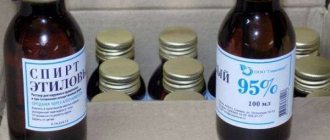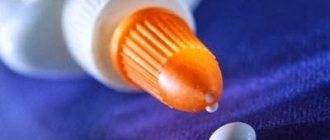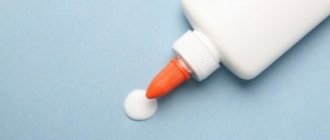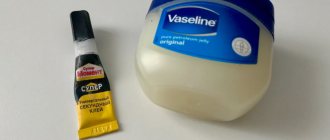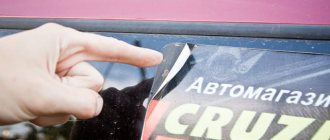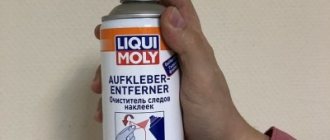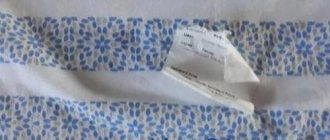Decorating with rhinestones can turn ordinary everyday clothes into a stylish wardrobe item.
But frequent washing and poor-quality fixation of stones leads to the fact that over time, only particles of glue remain in place of the bright shining rhinestone.
How to remove glue from rhinestones from clothes? Numerous folk methods, as well as special chemicals, will help you remove stains on your favorite item.
Secrets that will help preserve fabric from damage
There are several tricks to use when removing rhinestone glue from fabric. The number of recommendations is small, but each of them is of great importance:
- When a chemical adhesive solvent is used, the product becomes stringy or jelly-like. Then you can remove the glue quickly and efficiently using a stationery eraser.
- Aggressive solvents must be applied to the glue from the wrong side of the fabric. The fabric should be well saturated with the solvent, then the glue will come off on its own.
- If a spray is used, then apply the product from the front side. After processing, the product must be washed.
- The new product is pre-tested on the reverse side of the product to check the fabric's reaction to the composition.
- Washing after the procedure is mandatory.
And do not forget to carefully read the instructions for the products that will be used to remove glue after rhinestones.
Petrol
The crystal comes off when using gasoline. This product must be purified and is sold in hardware stores.
If, when removing, you use regular gasoline, which is used to fill cars, not only will a terrible stench appear, but the rhinestones will not be removed, but there will also be more hassle and questions about how to remove the stain and smell.
Remember to test such products on inconspicuous areas.
It is important to determine how the material will behave when interacting with gasoline, so as not to spoil the thing.
How to remove decoration:
- Wear rubber gloves, it is unknown how gasoline will affect your skin.
- Take a cotton pad and soak it in the product.
- Apply it to the wrong side of the product for a few minutes. If the fabric initially reacted well without gasoline, leave the composition to interact with the adhesive base longer.
- Remove the cotton pad and remove the crystals with tweezers.
After this manipulation, wash the item in a washing machine at the temperature setting recommended by the manufacturer. Then proceed to remove the glue. Gasoline helps remove rhinestones, but the glue itself may remain on the item.
Use freezer, white spirit, nail polish remover or any other solvent.
Traditional methods and devices for cleaning fabrics
If there is a fear that chemicals will ruin the fabric, then you can resort to folk remedies. Most often, it is precisely these methods and methods that the owner of the wardrobe uses, because they are more accessible and less aggressive in impact.
How to remove glue from clothes using traditional methods:
- A mixture of vinegar and water is the simplest and most effective way to deal with stains of any complexity. If the glue does not come off well, then you should add 1 teaspoon of ammonia to the composition.
- A strong remedy is ammonia, which is diluted in equal parts with water. Apply the solution exclusively to the wrong side.
- The most popular remedy is turpentine. But the problem is that turpentine can eat away the color of the fabric, so you should leave it for no more than a few minutes, and then wash the product thoroughly.
Gasoline can also be considered a folk remedy.
Delete correctly
To clean the fabric without damaging it, you need to remove traces of glue, observing the following rules.
- Acetone (and solvents based on it) should be applied to the underside of the clothing with a clean swab. In this case, blotting paper is placed on the front side. When it gets dirty, it needs to be changed.
- The spray should be sprayed onto the front side and washed with a clean swab. You can use a cotton pad as a tampon.
- After applying turpentine or nitromethane, wait a few minutes and then wipe the stain with a clean swab. These products can be applied to both the back and front sides.
- When wiping a stain, you need to be careful not to rub the glue onto a clean part of the fabric.
- If the glue has become jelly-like under the influence of the solvent, but cannot be removed with a swab, you can remove it with an eraser.
Advice
You can replace blotting paper with paper towels. They have the same absorbent properties. The only condition is that they must be white so that the dye does not get on the clothes under the influence of acetone.
Special products for removing glue from rhinestones from clothes
You can buy special solvents in the store that will help deal with the problem. Typically, these types of products are very effective and the cleaning process does not require much effort.
The most popular option is solvent 646. Its price is very reasonable and depends on additional qualities and chemical composition. Using the product is simple and easy, so no one will have any problems with it.
Every home usually contains acetone, which will be a wonderful analogue to any solvent. Medical alcohol can be an equally effective way to remove glue from clothes.
Adviсe
When removing glue from rhinestones, it is important to preserve the structure and color of the fabric. A few tips will help with this:
- When using acetone, alcohol and other solvents to remove glue from clothes, you must ensure that the liquid product is applied exactly to the contaminated area. For this purpose, it is convenient to use cotton swabs or pieces of cotton sponges.
- A regular office eraser will help to carefully remove softened glue particles.
- When using chemicals in your work, you need to take care to protect your hands (don't forget about gloves).
You will find all the most important and useful information about removing glue stains from clothes in this section.
Recommendations on how to remove glue from a certain type of fabric
Before removing glue from rhinestones from clothing, it is worth deciding on the quality of the fabric and whether it will withstand the impact. When buying something with rhinestones, you should initially pay attention to the quality and composition of the fabric in order to accurately understand whether it can be cleaned of glue later. Typically, rhinestones are attached to the following types of fabrics:
- Lightweight fabrics such as chiffon, silk. It is impossible to clean them from glue. The fibers are too thin, and at the slightest impact they will simply break. The best option in this situation is to disguise it using applique or a new pattern of rhinestones.
- Thick textiles such as denim or gabardine. It is more easily susceptible to various types of influences, so here you can experiment with various means and methods.
- Knitted items and knitwear. It is difficult to remove glue from them, since the substance usually penetrates into the fibers itself. During aggressive exposure, the canvas may stretch or change color.
Other fabrics of synthetic or natural origin have their own characteristics that should be checked on the reverse side of the textile.
If you need to remove glue from a swimsuit
Often swimsuits are decorated with rhinestones to give the product shine and brightness. But due to constant exposure to water, the pebbles may become loose and fall off.
A swimsuit with rhinestones can be cleaned of glue in several ways. The most effective option is mechanical action. The fabric from which swimsuits are made is quite durable and flexible, so you can try to remove stains with a scissor blade.
If very few stones have fallen out of the overall picture, then it is better to glue new ones in their place. Then there will be no problems at all with removing the adhesive substance. You can choose gentle solvents and try to remove the glue with a stiff brush.
What glue is used to fix rhinestones
Before you begin the process of cleaning fabric from glue, you should first determine the type of adhesive. Only in this way will it be clear exactly how to remove glue from rhinestones from clothes. There are substances that are basically impossible to remove from textiles.
What kind of glue is used to glue rhinestones to clothes?
- Thermoactive glue. It is almost impossible to remove from fabric.
- Hot melt adhesive. It is applied using a glue gun. It is very difficult to remove residue from fabric.
- Acrylic glue (any brand of superglue). Easily removed with a special solvent.
- Epoxy composition. It can be easily removed with solutions that contain acetone.
Other adhesive bases are more harmless and can be easily removed. It is enough to clean the area with a stiff brush and laundry soap.
Mechanical methods
Adhesive removers are not always effective. Moreover, there is a threat of fabric damage, so sometimes it is worth using mechanical methods to remove glue residues after rhinestones.
The simplest options and methods of mechanical cleaning are as follows:
- If the rhinestones were fixed using hot glue, then thermal treatment would be an ideal option for removing glue residue. You need to attach a sheet of paper to the problem area and iron the material from the wrong side. The glue should imprint on the paper.
- Using a scissor blade, try to remove the glue from the fabric. But this method is only suitable for thick fabric.
- Place the item in the freezer for 12 hours. Then use a stiff brush to remove any remaining frozen substance.
If you choose the right mechanical method of influence, then questions about how to remove glue from rhinestones from clothes will simply not arise.
How to remove stains depending on the type of glue
Washing clothes
Silicone
Silicone should be removed from clothing as soon as it gets on it. There is no need to wait for the sealant to dry, since once it hardens, it will be much more difficult or even impossible to remove. The fact is that fresh sealant found on clothing is washed off with warm water. If the silicone has already dried, you need to resort to mechanical removal methods.
- Items with traces of dried sealant should be soaked in cold water for 12 hours. There is no need to add anything to the water;
- After this time, the item must be washed in a machine. The mode should be intense, and the water temperature should be at least 60 degrees, and preferably more;
- If after this treatment there are traces of silicone, you should try to wipe them off with a coarse brush and wash the item again in the machine at high temperatures;
- This treatment cannot be carried out on thin and delicate fabrics.
Soaking clothes
Hot melt adhesive
Just like Moment glue is removed from clothing using a special solvent, hot melt glue is dissolved using anti-glue. There are other ways to remove this substance. How to remove glue from fabric:
- You need to use a nail polish remover, such as acetone. A cotton swab is moistened with it and applied to hot-melt adhesive on the surface of the fabric;
- After a few seconds, you need to remove the cotton swab and wipe off the dissolving glue with a clean cloth;
- These two procedures should be repeated alternately until all the substance is completely removed;
- Acetone dissolves hot-melt adhesive, and by removing it in parts, you can clean even the deepest stains.
Try using the method of freezing clothes:
- The item in the bag is placed in the freezer for 12 hours;
- Using a spoon with a sharp end or a dull knife, remove the dried hot melt adhesive after freezing;
- Usually it breaks off in one solid piece - after freezing its structure becomes brittle.
Hot-melt adhesive gets onto clothes in a molten hot state. It seems realistic to melt it again. This procedure is carried out using an iron and a thin piece of cotton fabric. This is done like this:
- The cotton fabric is placed on the ironing board;
- Damaged clothing is placed on top, with the glue stain facing down;
- A piece of cotton fabric is also placed on top;
- A hot iron melts the glue. It is absorbed into the fabric from 2 sides;
- To avoid glue getting on the sole of the iron, after every 10-20 seconds of treatment you need to move the stain in relation to the piece of cotton fabric.
Application of acetone
For rhinestones
Many people know that it is very difficult to remove glue from rhinestones from clothes, both denim and delicate materials. Fallen or torn rhinestones leave traces of glue in their place. They are very noticeable - white spots catch the eye. There are several options to solve this problem. One of them is to apply iron-on adhesives to clothes with an iron.
How to remove rhinestone glue from clothes:
- Remove stains from fallen rhinestones using a hot iron. To do this you will need a paper towel;
- The iron is heated to maximum, and then it is passed over a paper towel. The substance will melt under the influence of temperature;
- The presence of a paper towel prevents the iron from sticking to the heated substance.
To remove stains from white fabrics, try using white spirit or nail polish remover. But this option is suitable for removing traces of rhinestones or stickers only on white things. The solvent can remove not only the glue, but also the color from clothes. Rhinestones can be removed with an iron
- In this case, contamination is removed in a radical way. The item is laid out on a solid base and covered with a napkin or gauze. The area of frozen glue should be lightly tapped with a hammer and the separated fragments should be removed. Repeat until the fabric is completely clean. If the glue is not completely removed mechanically, then wipe the stain with gasoline, acetone or ethyl acetate. All that remains is to wash the clothes in hot water.
- Pharmaceutical dimesoxide will help remove stains from this glue. Carefully treat the contaminated area with the product and leave for half an hour.
Another way to hide defects on clothes
Sometimes it is impossible to know exactly how to remove glue from clothes. Often the methods are not suitable or the type of fabric does not allow for procedures with a relatively aggressive effect on the glue. Then you need to resort to other methods of dealing with the problem that will hide the defect.
The best option is applications. This method will allow you to hide places on clothing where traces of glue remain. A new picture to hide the defect can be made from the same rhinestones. An interesting option would be appliqué made from fabrics of different textures.
In addition to bright appliqués, accessories in the form of buttons, zippers, and decorative fasteners can be used. Lace and ribbons are also a good alternative to any type of decoration. It is worth choosing the right option that will ideally highlight the beauty of the product without spoiling its appearance.
Selecting a solvent for the type of glue
If the type of glue is determined, then there will be practically no problems with what to use for cleaning.
Glue, which contains epoxy resin, can only be removed with turpentine. Turpentine stains can be removed with alcohol. At the end, the item must be washed with laundry soap, and then in the standard cycle.
Water-based glue is removed during washing with laundry soap. First you need to manually wash the problem area, and then put the item in the washing machine.
Superglue can be easily removed using solvent 646, the price of which is almost pennies compared to the saved item. It will cost you about 100 rubles. In the same way, by the way, you can save a swimsuit with rhinestones from stains.
Rubber adhesive and similar compounds can be removed using white spirit, gasoline and other household solvents. Additionally, mechanical action or several nuances of cleansing may be necessary.
Another method is freezing
Only those compounds that were applied using a similar method can be cleaned using strong heating. If water-based adhesives are subjected to heat treatment, the opposite result will occur. When heated, they change their structure, crystallize and cease to be soluble.
To prevent such difficulties, you need to act thoughtfully and carefully. Even durable denim can suffer from improper handling.
First you need to study the composition of the glue that was used in the work. Once you determine that a thermal compound has been used, you can begin the cleaning procedure.
Before ironing, it is necessary to place sheets of paper or thick cotton fabric on both sides of the fabric.
It is carried out in the following ways:
- The glued fragment is heated with a household soldering iron. This should be done with special gloves to avoid burning your fingers. Through the rhinestones, heat is transferred to the hardened glue. It gradually heats up and softens. At the moment when the composition has become plastic, but has not yet flowed, it must be carefully pryed off with a thin blade and separated from the material along with the rhinestones. If there are minor stains on the material, they can be removed using other methods.
- Using a regular iron. Before starting work, you need to take two sheets of white paper or thick white cotton fabric. These materials are laid on both sides of the fabric. Ironing starts at minimum temperature. Under its influence, the glue lags behind the fabric and sticks to the outer lining. It needs to be changed as needed. After removing the outer layer, the fabric is heated at maximum temperature. The glue boils and transfers to the wrong side of the material, where it is absorbed into the second pad.
- Wash at maximum heat. The laundry is loaded into the washing machine and run with a special detergent for at least 2 hours. This is quite enough to soften and remove most of the adhesives.
During heat treatment, it is necessary to maintain the optimal heating mode
When working with synthetic fabrics, special care must be taken to avoid melting them.
Most types of glue change their structure when exposed to extreme cold. Deep freezing causes the substance to become very brittle and unstable. This property applies more to compositions that were applied hot.
To remove glue, you need to pack the clothes in a sealed plastic bag and put them in the freezer.
Freezing can be done as follows:
- Pack the clothing in a sealed plastic bag and place it in the freezer. It is necessary to wait at least 6 hours for the crystal lattice of the glue to completely collapse. The bag is necessary to prevent clothes from freezing to the racks and absorbing refrigerator odors.
- Hang laundry outside in severe frost (below -25ºС). It is best to leave your clothes overnight to prevent them from heating up from the sun's rays. This approach is only possible if there is no likelihood of clothing theft. Otherwise, it may disappear, saving its owner from the problems of removing glue stains.
- Treat the contaminated area with aerosol freezing. It gives the effect of instantly cooling the fabric to -50ºС. If it is necessary to clean a large area, then the spray is applied in stages to ensure high-quality cleaning of all areas.
After cooling, you must begin cleaning immediately. The glue is knocked off against a hard surface or broken with a hammer. As a rule, the material crumbles easily and lags behind the fabric. The remaining fragments are removed with a stiff brush.
If you can’t peel off the beads using alcohol and tweezers, it’s time to move on to the next method. It does not involve the use of special chemicals, everything is much simpler.
It is known that epoxy in the refrigerator can change its structure. Therefore, why not try to remove rhinestones so that no traces remain using low temperatures?
The item of clothing is wrapped in a plastic bag and placed in the freezer.
After 7 hours, the fabric is removed from the freezer and peeling begins. The beads should come off along with the glue.
The glue may not come off completely, so you should also grab a brush with stiff bristles. Tap the glue with a hammer to crumble it and go over it with a brush.
This procedure is very effective, but if your glue is very resistant to any type of impact, you should repeat it again.

